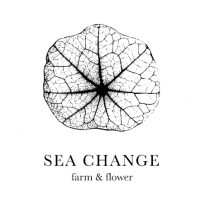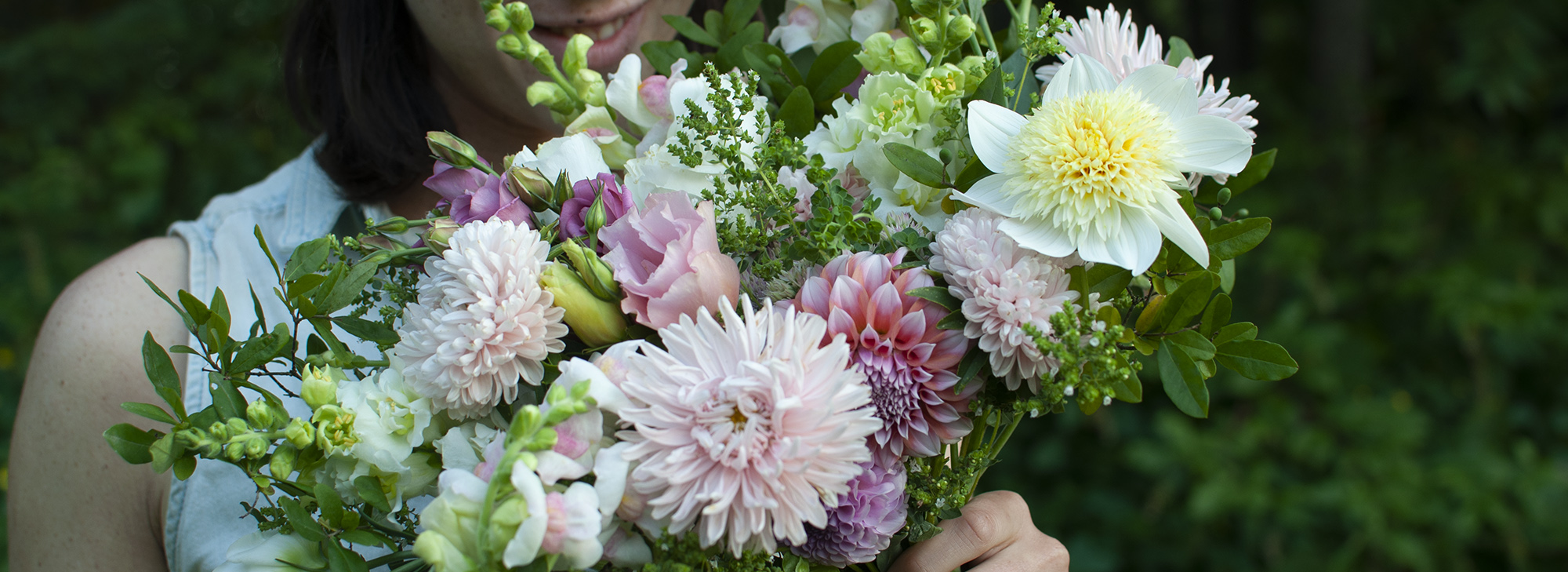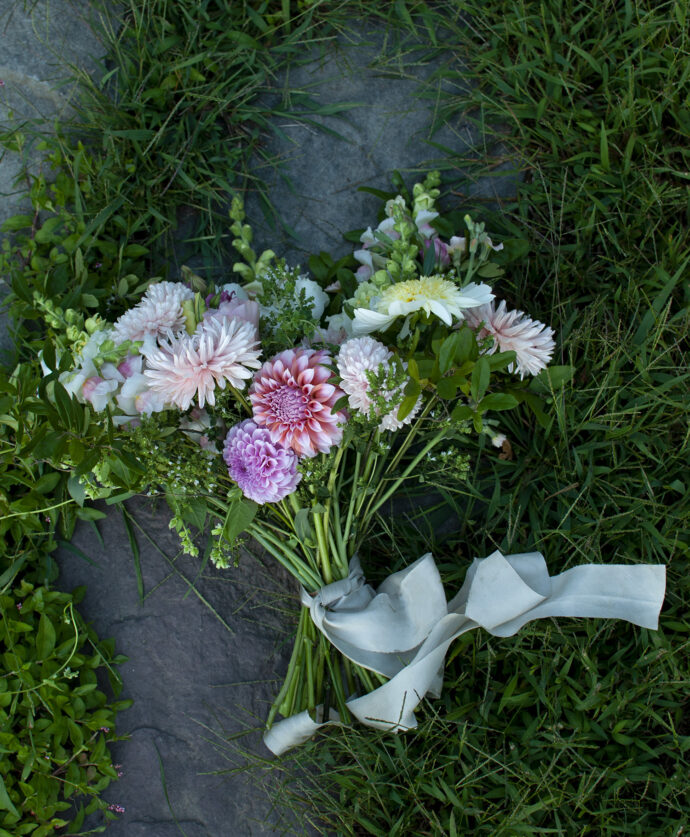Aaaand we’re back with another installment of Flower Color Theory!
This week’s episode is about tints.
Tints are the sister theory to shades. As a refresher, a shade is created when you take a color from the color wheel (also called a hue) and add black to it.

Conversely, a tint is created when you take a hue and add white to it! Tints can range from as dark as the original hue itself up to a light color that is almost white.

On the left is the original color (Red-Violet) from the color wheel. Moving towards the right, larger and larger amounts of white are added to the Red-Violet to create tints of Red-Violet.
As with shades, tints can either be low-contrast if they have similar amounts of white in them…

…or high-contrast if they are very different in value.

Now, let’s do it with flowers:

As with the shades example last time, I sorted these flowers carefully into a nice little tint gradient, ranging from Red-Violet on the right to true whites on the left.
The bouquet that I made with these tints has a soft pastel feeling to it:
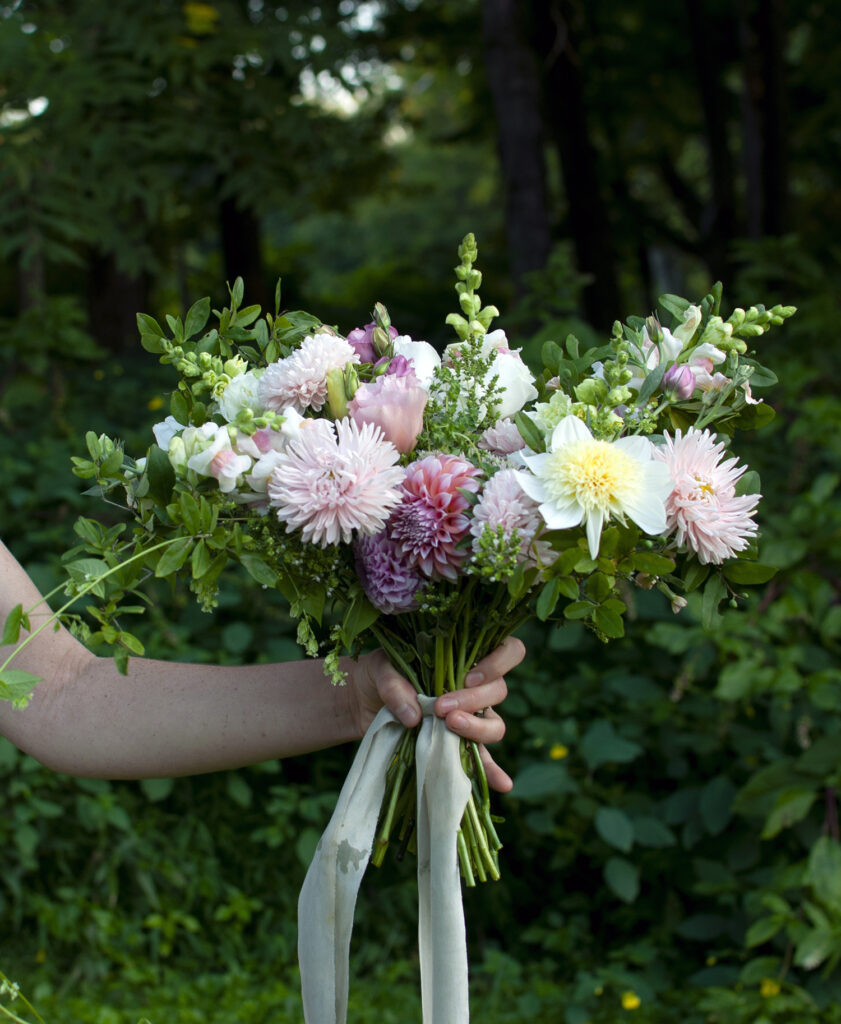
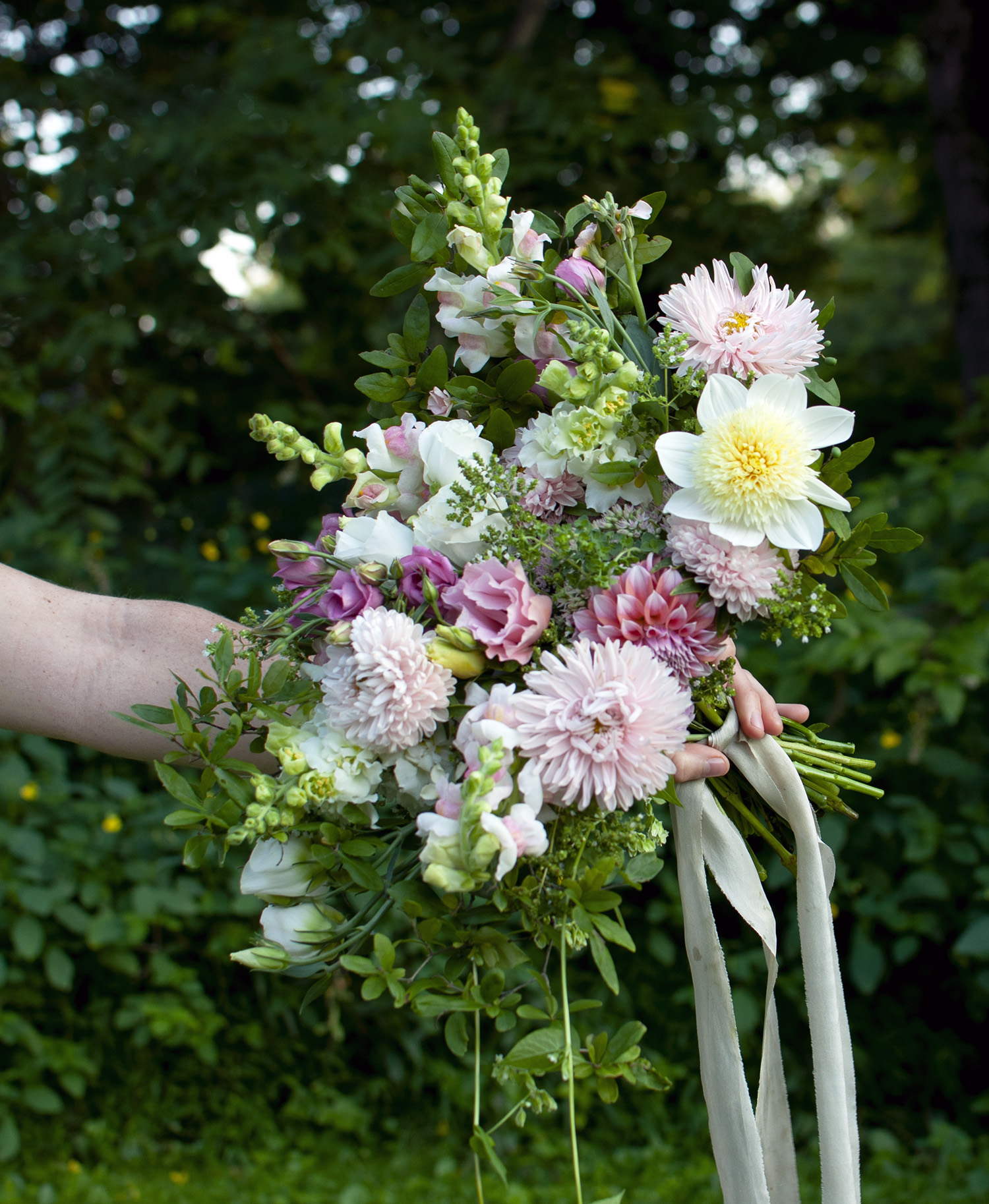
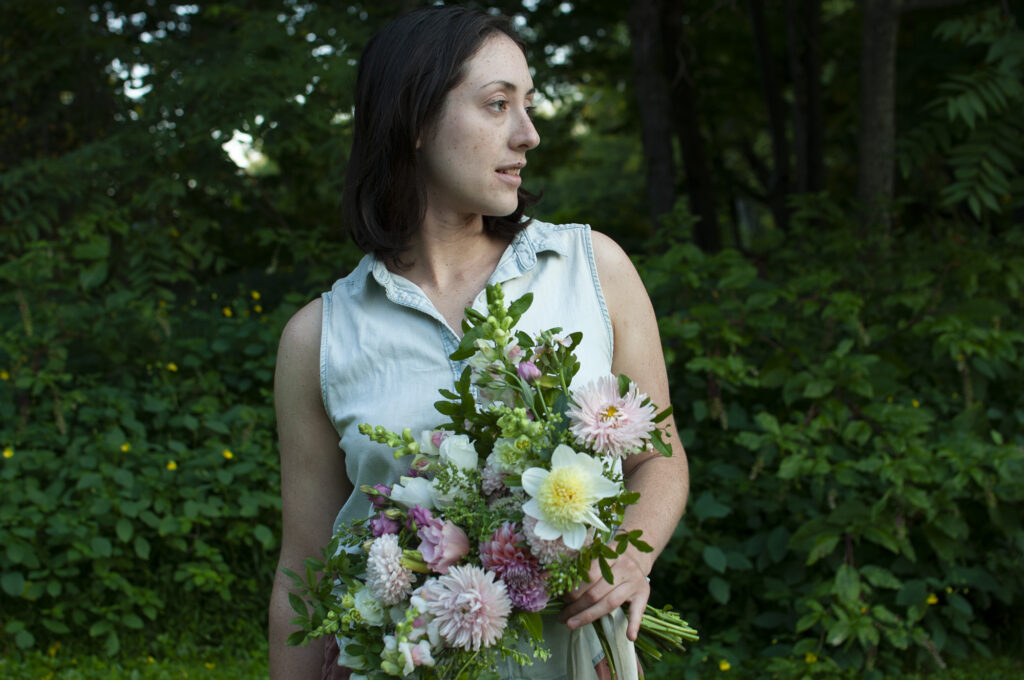
Is there a little yellow in there? Yeah, there is, but I couldn’t pass up that cute, fluffy dahlia!! It’s not a tint of Red-Violet, though, so just pretend it’s not there 😉
Using tints is a great way to bring a little bit of depth and color to a “mostly white” bouquet. I would definitely propose this strategy for a wedding client who wanted a classic white bouquet with a bit of a fun twist!
Like this bridal bouquet, which uses tints of red (aka, pink) and tints of red-orange (aka, peach) as colorful additions to a neutral color palette:
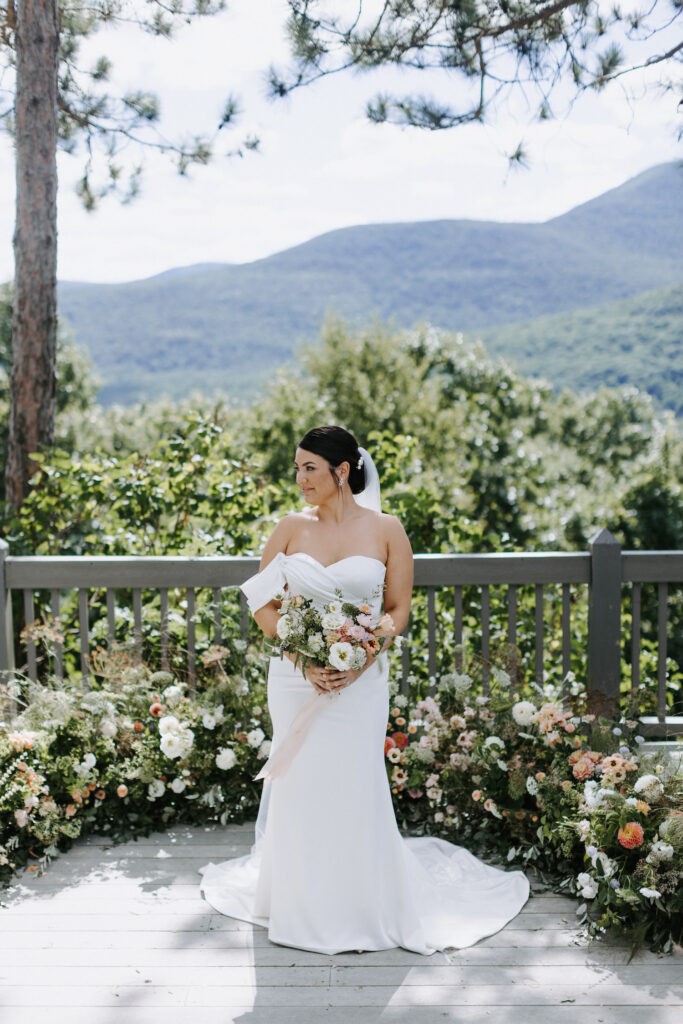
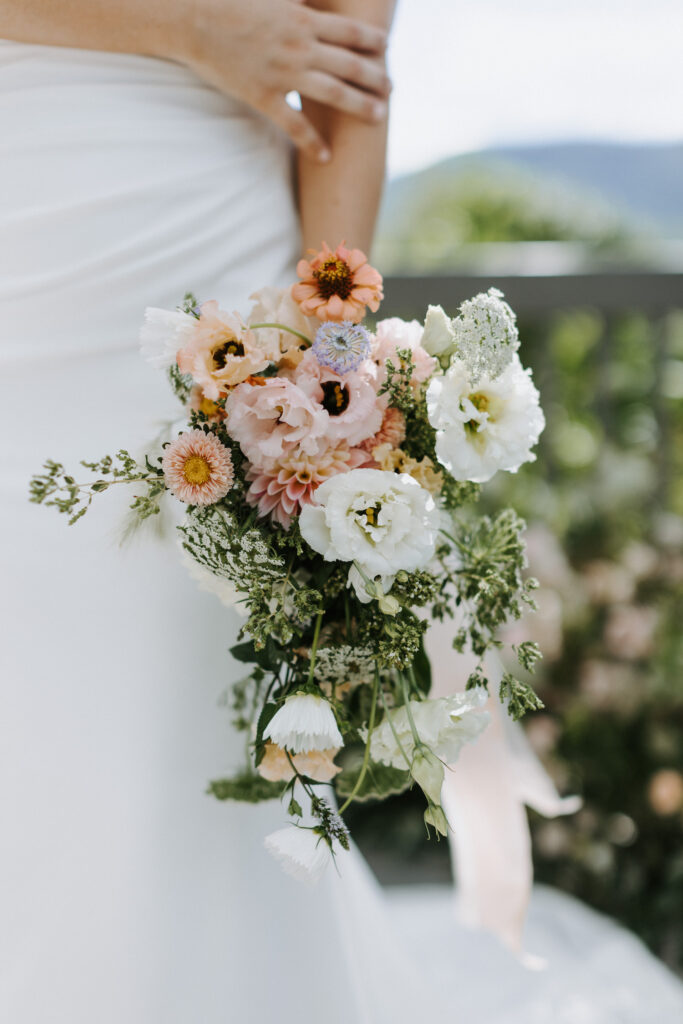
Shades and Tints Together
The next evolution of this idea, naturally, is to combine both shades and tints together in one arrangement.
Let’s look at the flowers:

What do we get when we put all those together?? A massive, very pink bouquet!
It’s tempting to describe this bouquet as “colorful,” but all the flowers in it are either a shade or a tint of Red-Violet. So technically, it is not “full” of colors–it’s only got one hue!
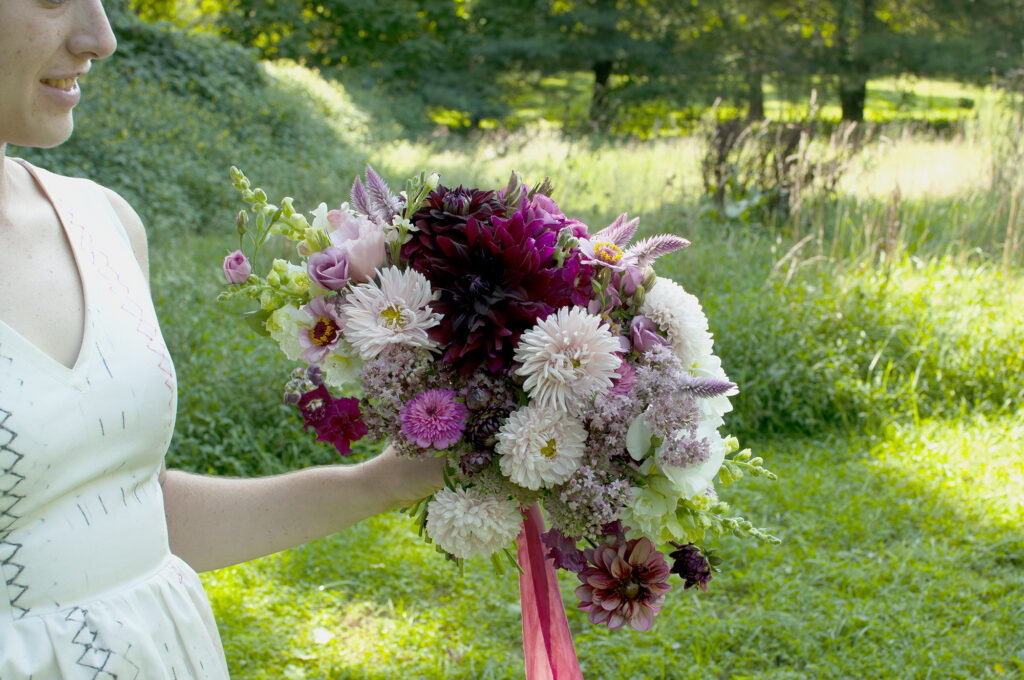
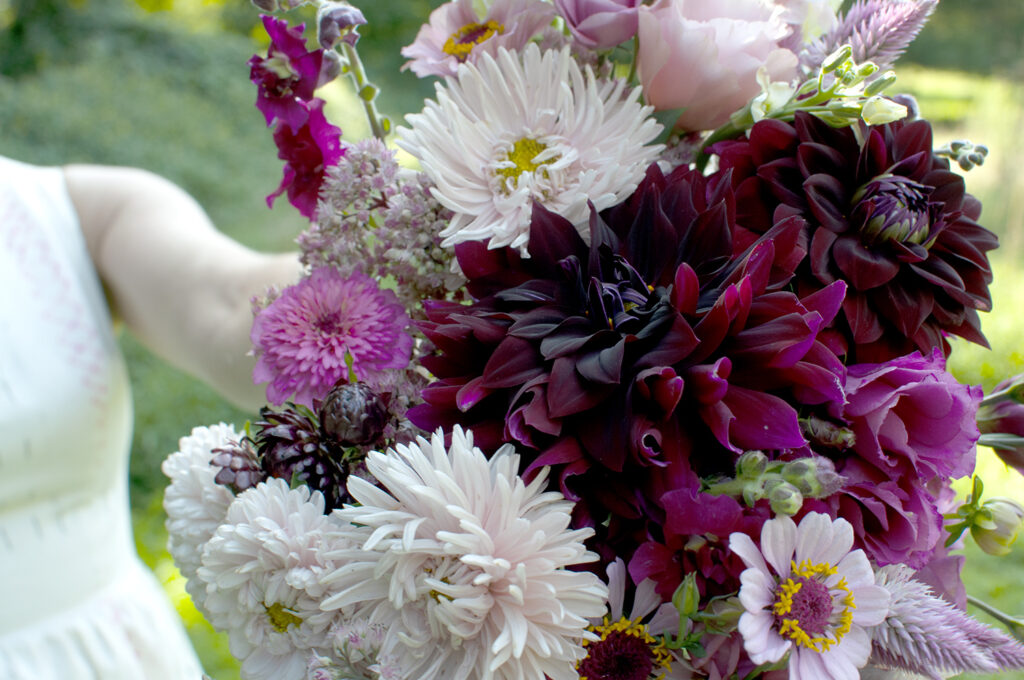
Because shades can be so dark, and tints can be so light, a shade-and-tint bouquet can be very high contrast even though it’s technically monochromatic.
Especially where the darkest shades and the lightest tints are right next to each other, this contrast can be striking. Maybe, too striking? That’s a matter of personal preference.

All right, let’s do a little summary of these concepts, with an image comparison:
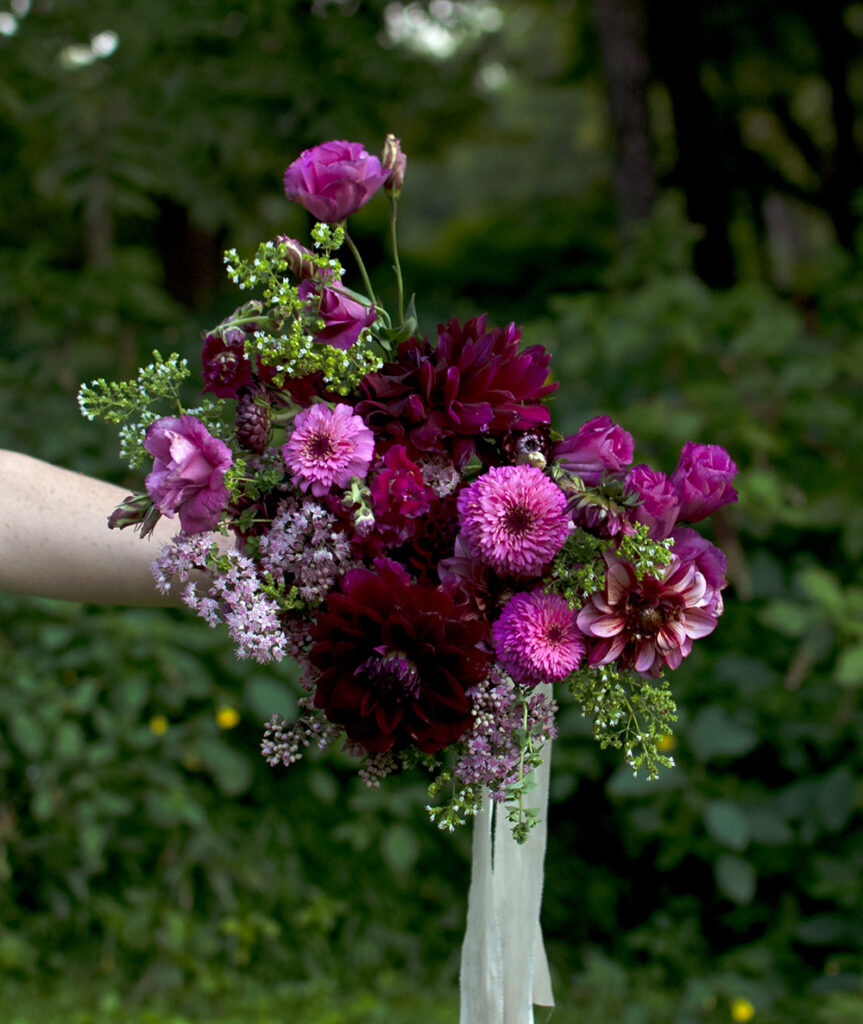
Shades!
Hue + black
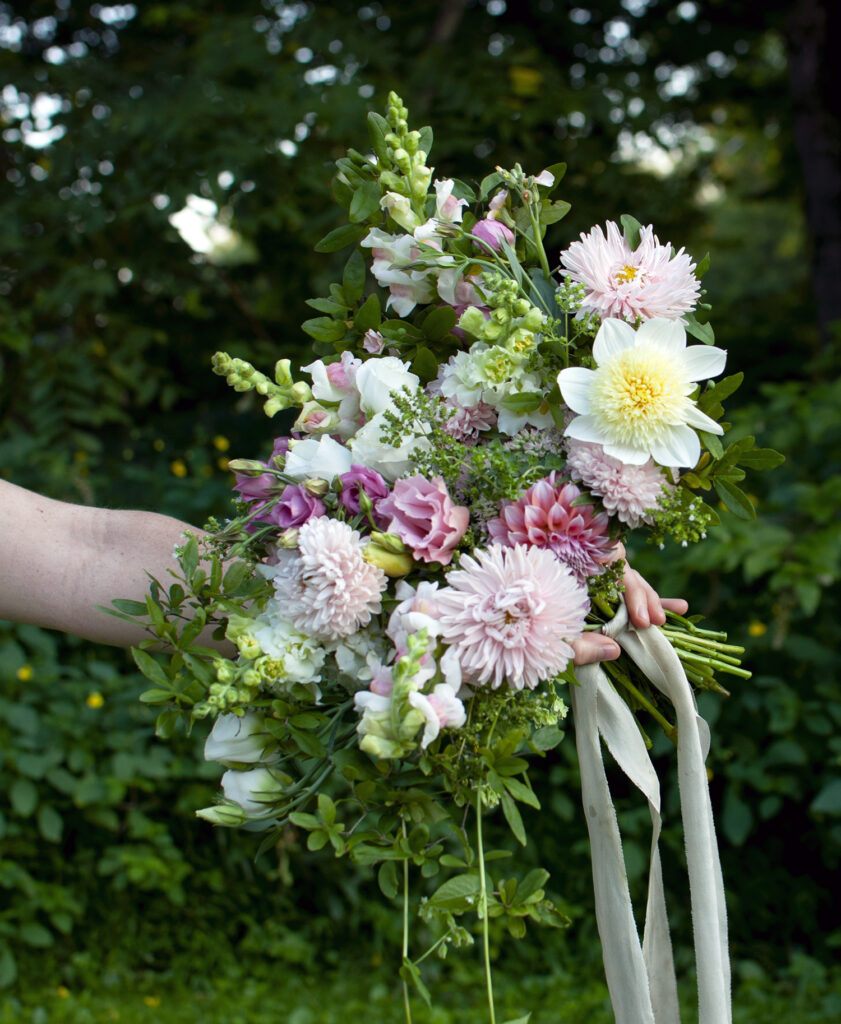
Tints!
Hue + white

Shades and Tints!
Black <- Hue -> White
Well! That’s enough flower color theory for one day. I wish you the very best weekend–one full of colors!
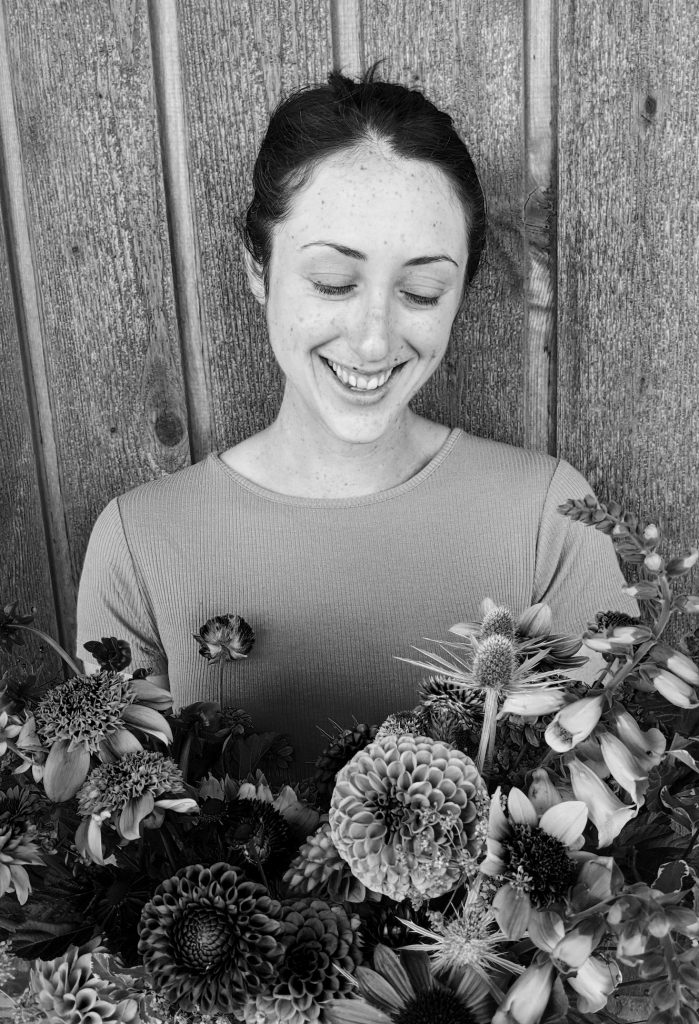
Samantha is the owner of Sea Change Farm & Flower.
Connect with me!
Sign up for our newsletter here.
